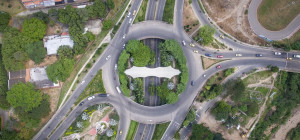In the grand scheme of human evolution, it is an undisputed fact that we are in the age of digital revolution. The recent advent of the fifth generation of wireless technology (5G) and its symbiotic relationship with the Internet of Things (IoT) promises a radical shift in the connectivity landscape, embarking on an unprecedented chapter in human history. This new era of ubiquitous, high-speed, low-latency connectivity and the widespread diffusion of smart devices sets the stage for the extraordinary synergy between 5G and IoT, offering a future of remarkable interoperability and automation (Deng et al., 2020).
The 5G Revolution
5G technology, the latest generational leap in wireless communication standards, offers a wide array of improvements over its predecessors, including ultra-high-speed data rates, ultra-reliability, and extremely low latency (Singh et al., 2020). The technological advancements brought about by 5G are extraordinary; as Qualcomm (2019) outlines, the peak data rates achievable with 5G can reach 20 Gbps, up to 100 times faster than its predecessor, 4G. This rapid data transmission allows a degree of connectivity and responsiveness that can reshape industries. Moreover, the millisecond-level latency of 5G makes real-time communication and control across countless devices a viable reality.
IoT and Its Evolving Landscape
The Internet of Things, an intricate web of interconnected physical devices capable of collecting and exchanging data, has been expanding exponentially in recent years. According to a forecast by Statista (2021), the number of IoT-connected devices worldwide is projected to reach a staggering 30.9 billion units by 2025. This concept of IoT breathes digital life into everyday objects, transforming them into ‘smart’ entities that can interact, learn from each other, and make autonomous decisions.
5G and IoT: A Harmonious Symbiosis
5G and IoT are more than just trendy tech buzzwords; their synergy holds the potential to revolutionize industries, systems, and lifestyles. The ability of 5G to handle a massive device density—up to one million devices per square kilometer—positions it as an unparalleled enabler for the Internet of Things (Nokia, 2021). Furthermore, the low latency of 5G networks ensures seamless, instantaneous communication among IoT devices, driving remarkable changes in diverse areas like autonomous vehicles, smart cities, healthcare, and manufacturing.
In the healthcare sector, for instance, the integration of 5G and IoT could facilitate groundbreaking practices such as remote patient monitoring, telemedicine, and even remote surgeries, thus democratizing access to quality healthcare even in remote areas (Hu et al., 2021). Smart cities stand to gain significantly from IoT devices communicating over 5G networks, enabling real-time traffic management, environmental monitoring, and responsive urban infrastructure, thus making cities safer, cleaner, and more sustainable.
In the field of manufacturing, IoT, when powered by 5G, can revolutionize operations with real-time equipment monitoring, predictive maintenance, and efficient supply chain management. This transformation paves the way for Industry 4.0, heralding a new era of automated and digitized production that enhances efficiency and productivity.
Meanwhile, in the realm of autonomous vehicles, the low latency and high data rates of 5G can allow vehicles to share information in real-time, making decisions based on their environment, traffic conditions, and potential hazards. This can significantly reduce accidents, optimize traffic flow, and create a more efficient transportation system.
Conclusion
The fusion of 5G and IoT is not merely a technological evolution; it’s a societal revolution. Its potential is vast, extending beyond convenience to include enhancing productivity, optimizing resources, and even saving lives. However, it is also critical to address challenges such as security and privacy. As we usher in this exciting era, embracing these technologies and mitigating their risks will be key to fully exploiting their potential and shaping the world of tomorrow.
References:
1. Deng, R., Lu, R., Lai, C., Luan, T. H., & Liang, H. (2020). Optimal workload allocation in fog-cloud computing towards balanced delay and power consumption. IEEE Internet of Things Journal.
2. Singh, S., Kumar, N., & Sharma, A. (2020). A comprehensive survey on machine learning-based big data analytics in IoT networks. IEEE Access.
3. Qualcomm. (2019). 5G at a Glance.
4. Statista. (2021). Internet of Things (IoT) connected devices installed base worldwide from 2015 to 2025.
5. Nokia. (2021). 5G in Action.
6. Hu, P., Dhelim, S., Ning





![Top CEOs under 30-The Young Guns Of Technology [Infographic]](https://lerablog.org/wp-content/plugins/wp-thumbie/timthumb.php?src=http://lerablog.org/wp-content/uploads/2015/03/the-young-guns-of-technology.jpg&w=300&h=140&zc=1)


